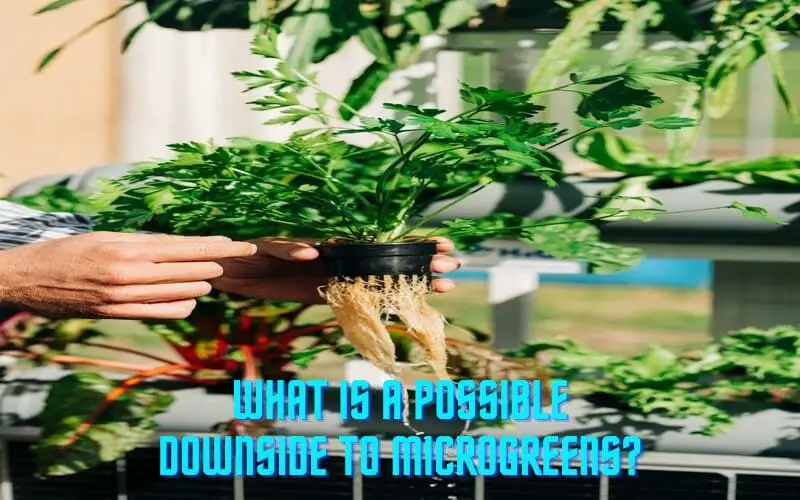What Is A Possible Downside To Microgreens? Lets Explore Now

Introduction
Welcome to our comprehensive guide on microgreens! In this article, we’ll explore the fascinating world of microgreens, addressing their health risks, nutritional content, safe growing and handling practices, and much more. Whether you’re a seasoned gardener or a beginner in the world of soilless agriculture, this resource is designed to provide you with valuable insights and actionable information.
Answer to the Question
Microgreens, despite their numerous benefits, may pose a possible downside in terms of potential health risks associated with their consumption. As we delve into the details of microgreens, we’ll carefully examine the various aspects that play into this consideration, helping you make informed decisions about incorporating microgreens into your diet and cultivation practices.
Health Risks Associated with Microgreens
When exploring the health risks associated with microgreens, it’s important to consider several factors:
- Contaminated Soil: Microgreens are grown in soil, and if the soil is contaminated with pathogens or heavy metals, there is a risk of ingesting these harmful substances.
- Seed Quality: The quality of seeds used for growing microgreens is crucial. Low-quality or contaminated seeds can introduce health risks.
- Growing Conditions: Factors such as humidity, temperature, and air quality can impact the growth of microgreens and potentially lead to contamination if not properly monitored.
- Harvesting Considerations: Optimal harvesting practices are essential to minimize health risks. Improper handling and timing of harvesting can contribute to contamination.
In addition to these factors, the short time for growth and the specific requirements for optimal harvesting of microgreens present unique challenges in managing health risks associated with their consumption. It’s crucial to understand these aspects to effectively mitigate potential health risks.
Nutritional Content of Microgreens
Delving into the nutritional content of microgreens unveils a wealth of valuable information. From the best seeds for optimal nutrition to the harvesting time that helps retain their great nutritional value, we’ll explore different ways to consider and maximize the nutritional benefits of microgreens in your diet.
- Vitamins and Minerals: Microgreens are packed with essential vitamins and minerals, including Vitamin C, Vitamin K, Vitamin E, iron, potassium, and zinc.
- Antioxidants: These tiny greens are rich in antioxidants that help protect cells from damage and reduce the risk of chronic diseases.
- Nutrient Density: Despite their small size, microgreens are densely packed with nutrients, making them a powerhouse of nutrition.
Growing and Handling Microgreens Safely
Growing and handling microgreens safely involves a series of important steps and considerations. These ensure the health and quality of the final product. Here, we will delve deeper into the key aspects of growing and handling microgreens, providing you with comprehensive guidance on cultivating and managing microgreens for optimum safety and successful growth.
- Selection of Soil: The choice of soil plays a crucial role in the successful growth of microgreens. Nutrient-dense soil with proper drainage capabilities is essential for the development of healthy and vibrant microgreens.
- Growing Techniques: Various growing techniques can be employed, such as hydroponic systems, soil-based cultivation, or the use of grow mats. Each technique has its own advantages, and choosing the most suitable approach depends on factors. These factors include space availability, resources, and the types of microgreens being cultivated.
- Watering Practices: Proper watering is vital for the health and growth of microgreens. Over-watering can lead to mold growth and other issues, while under-watering can stunt their development. We will highlight the best watering practices to maintain optimal moisture levels without causing waterlogging.
- Time Limitations: The growth cycle of microgreens is relatively short. It is crucial to harvest them at the right time to ensure maximum flavor and nutritional content. We’ll outline the ideal timeframes for harvesting different types of microgreens to achieve the best results.
Conclusion
This in-depth exploration of microgreens has shed light on their many facets. These facets include health risks, nutritional content, and safe cultivation practices. We placed a focus on valuable information and expert insights. Logically, we hope this resource equips you with the knowledge and confidence to embrace the world of microgreens. Finally, we hope that you do it with enthusiasm and informed decision-making.
